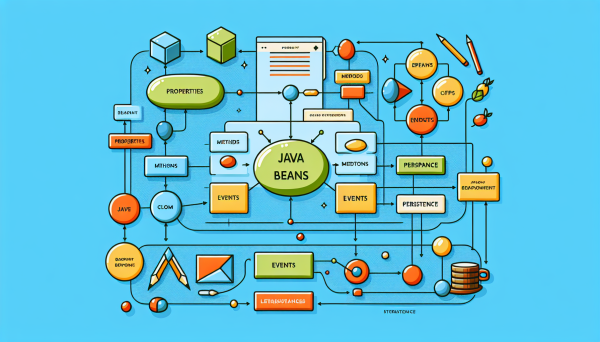The editor of Downcodes will take you to learn more about Java Beans! Java Bean is an important concept in Java programming. It is a special Java class used to encapsulate multiple objects and improve code reusability and maintainability. This article will introduce in detail the definition, characteristics, composition, applications and differences between Java Beans and POJOs, as well as related FAQs to help you better understand and use Java Beans.

Java Bean is a special Java class, mainly used to encapsulate multiple objects into one object. It follows specific naming rules, is a reusable component, and can be serialized. In a Java Bean, all member variables are usually made private and accessed through public getter and setter methods. This design pattern is called encapsulation. Encapsulation is a fundamental principle in object-oriented programming that aims to protect the state inside an object and hide its complexity. By providing standard setter and getter methods, Java Beans allow the outside world to obtain and set object properties through these interfaces instead of directly accessing the fields inside the object. This approach not only improves the usability of components, but also enhances the security and robustness of the program.
### 1. Definition and characteristics of JAVA BEAN
Java Bean is a Java class that follows specific specifications and has the following characteristics:
– Encapsulation: Java Bean hides properties inside the class and provides access to properties through public methods, which helps maintain and modify code while ensuring data security and integrity.
– Reusability: As components, Java Beans can be reused in multiple applications without changing the original code, greatly improving development efficiency.
– Componentization: Java Beans can be combined with other Beans to form complex applications. This modular design makes applications more flexible and easier to manage.
### 2. Composition of JAVA BEAN
A standard Java Bean consists of three parts:
– Properties: Java Bean properties are private, which means they cannot be directly accessed by the outside world. The type of a property can be any Java data type, including other beans.
– Methods: Java Beans expose their properties through public getter and setter methods. The getter method is used to read the attribute value, and the setter method is used to set the attribute value.
– Parameterless constructor: Java Bean must provide a parameterless constructor, which allows the Bean to be instantiated without any initialization data.
### 3. Application of JAVA BEAN
Java Beans are widely used in various Java technologies, such as:
– Java EE technology: In Java EE, Beans are used to encapsulate business logic.
– JavaServer Pages (JSP): In JSP, Beans are used to pass data between client and server.
– Applications in frameworks: Many popular Java frameworks such as Spring, Hibernate, etc. use Java Beans to configure and manage application components.
### 4. The difference between JAVA BEAN and POJO
Although Java Beans and POJOs (PlAIn Old Java Object) are both Java objects, there are some key differences between them:
– Specification requirements: Java Beans must follow specific naming rules and design patterns, such as having no-argument constructors, private properties, etc. POJO does not enforce these specifications.
– Additional functions: Java Beans can usually support event processing, serialization and other functions, while POJOs are simpler and do not have these additional requirements.
Java Bean is a core concept in Java programming. Understanding its definition, characteristics and applications is crucial to developing efficient, reusable and modular Java applications. By properly utilizing Java Beans, developers can improve code readability, maintainability, and scalability.
What are Java Beans?
A Java Bean is a Java class that conforms to specific programming specifications and is used to encapsulate data and provide reusable components in Java applications. It usually contains private fields, public getter and setter methods, and no-argument constructors. Java Beans can also implement a serializable interface so that they can be serialized into a byte stream, which can be transmitted over the network or stored on disk during persistence.
What is the role of Java Beans?
The role of Java Beans is to provide a componentized approach that allows developers to split applications into multiple independent parts for easy management and maintenance. By using Java Beans, data encapsulation, code reuse and modular development can be achieved, thereby improving the scalability and maintainability of applications. Java Beans can also be automatically recognized and operated by graphical development tools (such as Eclipse, NetBeans), making it convenient for developers to design visual interfaces.
What is the difference between Java Beans and ordinary Java classes?
The main difference between Java Beans and ordinary Java classes is that they follow specific naming conventions and programming conventions. Java Bean class names usually start with a capital letter and contain public no-argument constructors, private instance variables, and public getter and setter methods. In addition, Java Bean classes should be serializable to facilitate transmission and persistent storage in distributed systems. In contrast, ordinary Java classes may not follow these specifications and only provide basic functionality without considering reusability and extensibility.
I hope this article can help you better understand Java Beans. The editor of Downcodes will continue to bring you more exciting content!